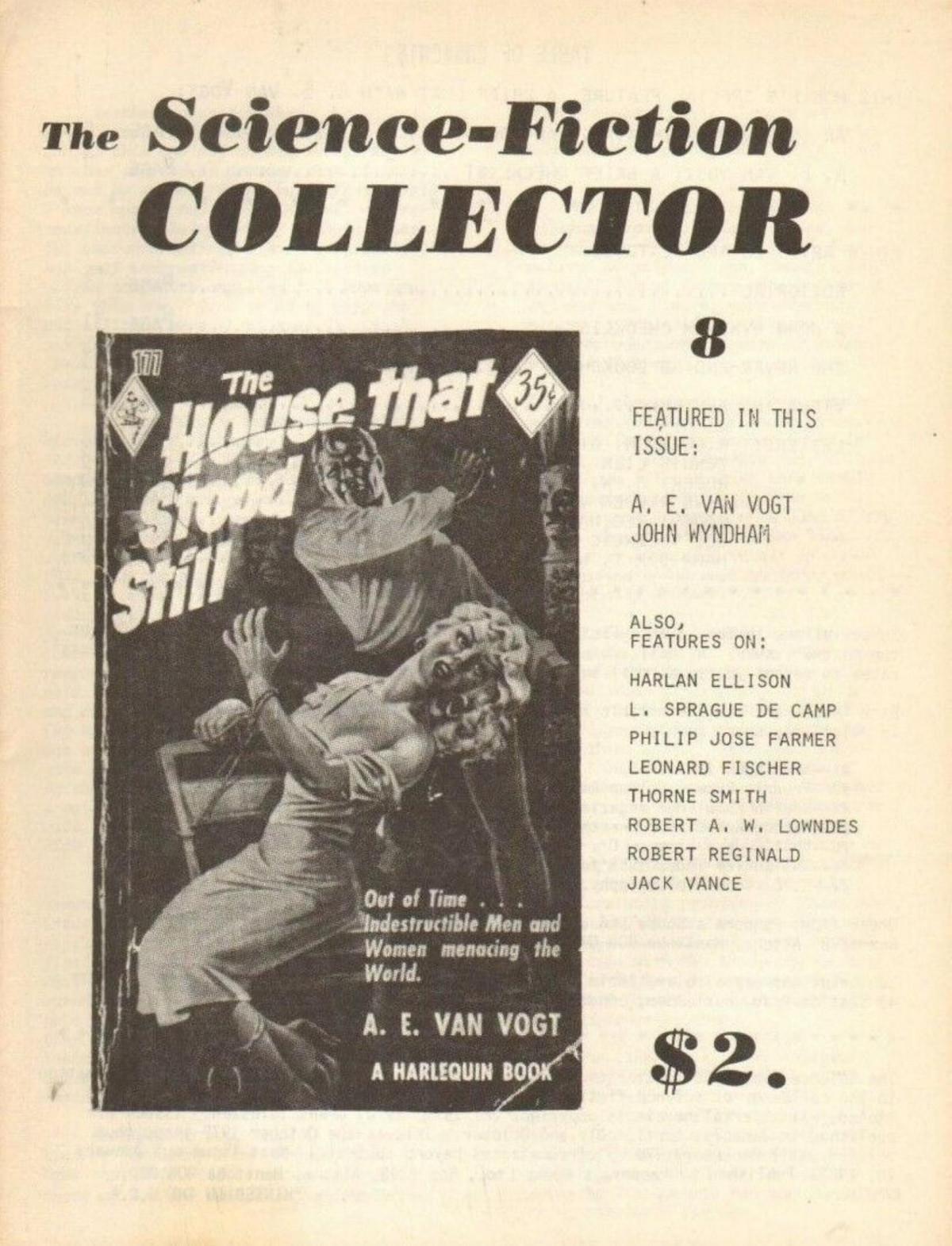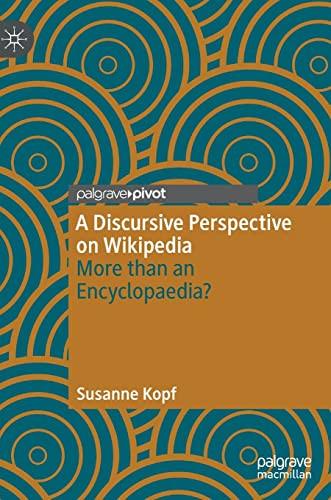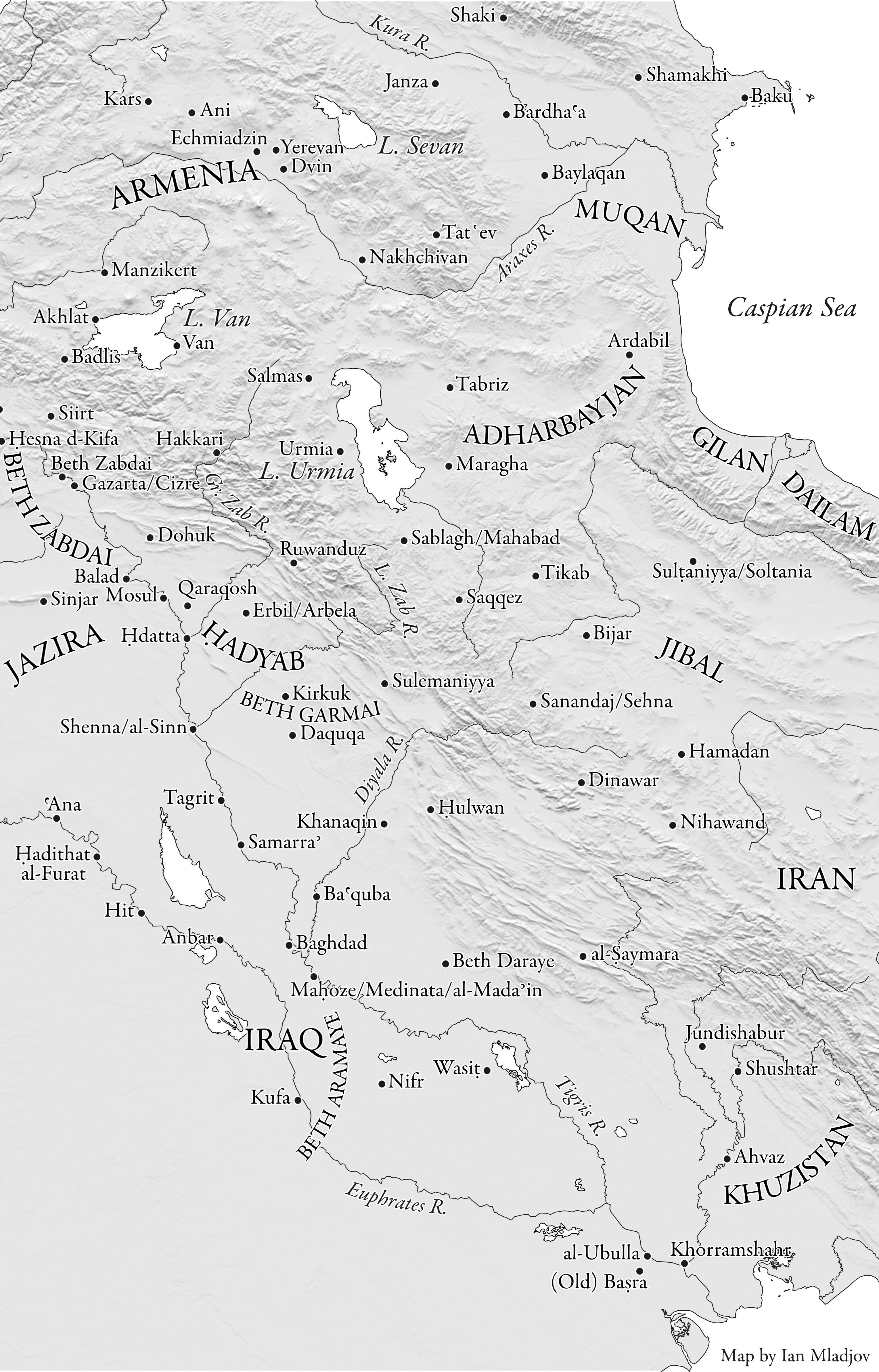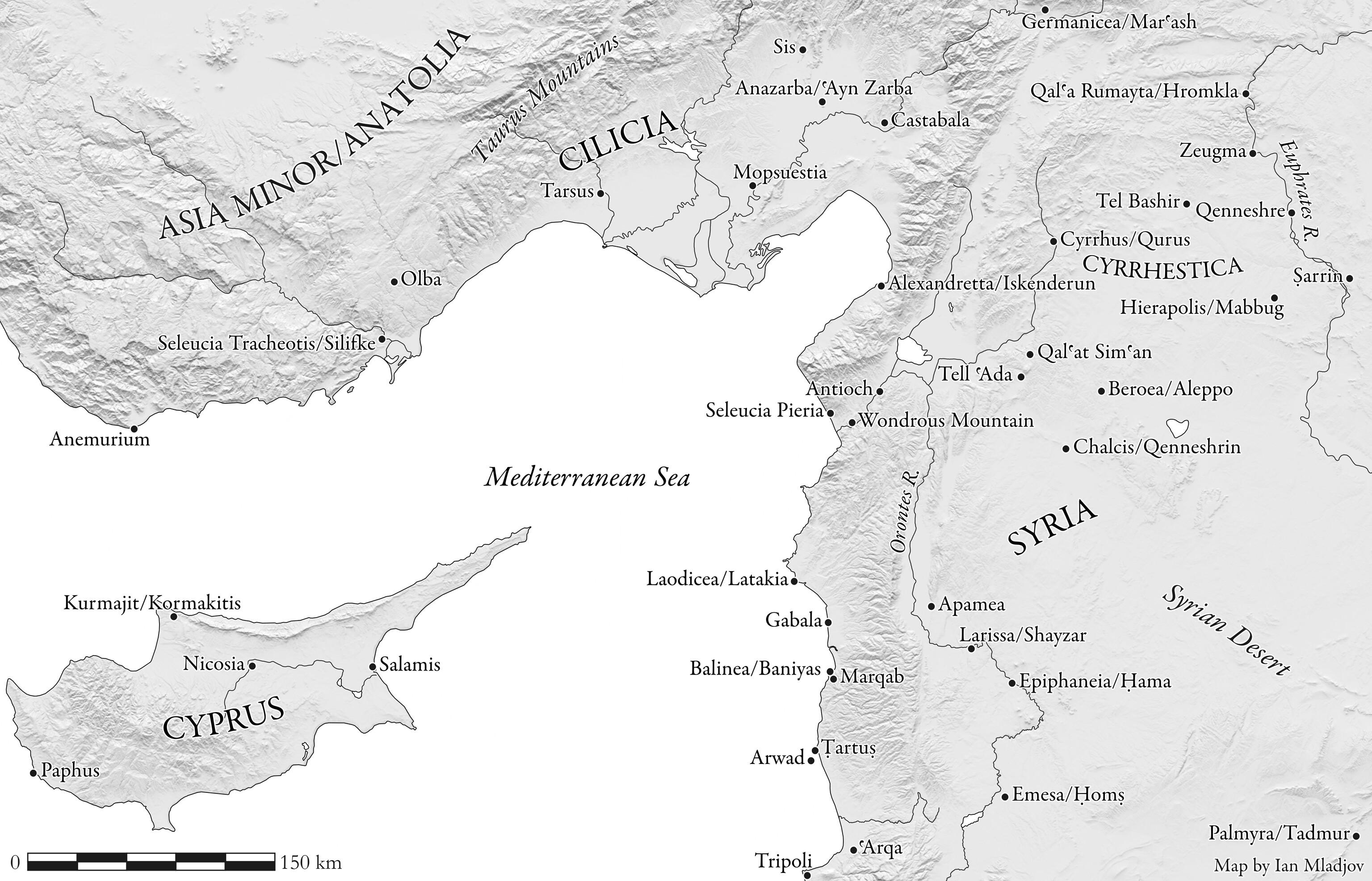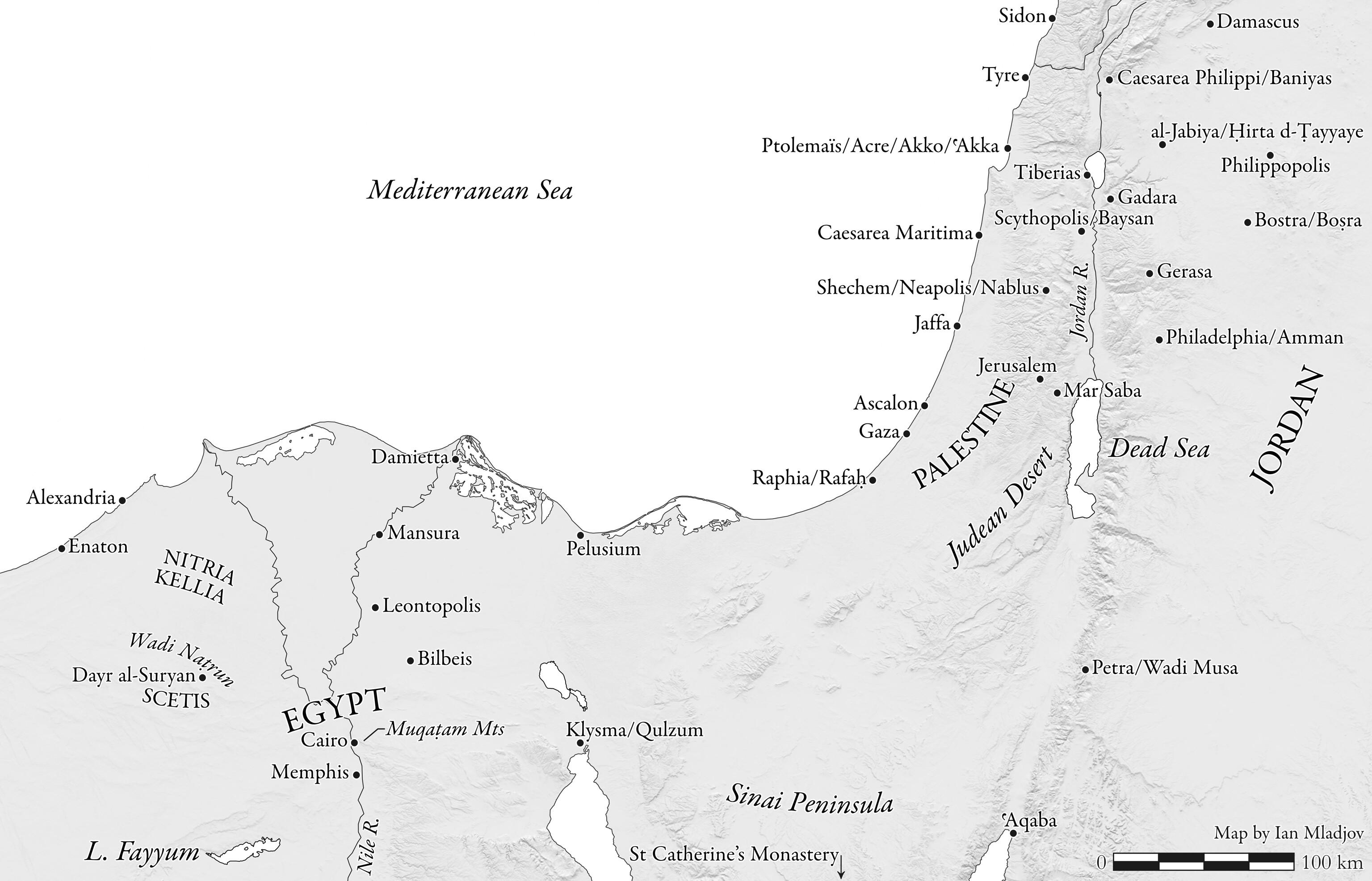JohnofDamascus MoreThanaCompiler
Editedby ScottAbles
TheLibraryofCongressCataloging-in-PublicationDataisavailableonlineathttps://catalog.loc.gov lcrecordavailableathttps://lccn.loc.gov/2022050940
TypefacefortheLatin,Greek,andCyrillicscripts:“Brill”.Seeanddownload:brill.com/brill‑typeface.
issn2213-0039
isbn978-90-04-52642-6(hardback) isbn978-90-04-52686-0(e-book)
Copyright2023byScottAbles.PublishedbyKoninklijkeBrillnv,Leiden,TheNetherlands. KoninklijkeBrillnvincorporatestheimprintsBrill,BrillNijhoff,BrillHotei,BrillSchöningh,BrillFink, Brillmentis,Vandenhoeck&Ruprecht,Böhlau,V&RunipressandWageningenAcademic. KoninklijkeBrillnvreservestherighttoprotectthispublicationagainstunauthorizeduse.Requestsfor re-useand/ortranslationsmustbeaddressedtoKoninklijkeBrillnvviabrill.comorcopyright.com.
Thisbookisprintedonacid-freepaperandproducedinasustainablemanner.
ForKaren
Contents
Prefaceix
ListofMapsandFiguresx
Abbreviationsxi
NotesonContributorsxiv
Mapsxvii
Introduction1 ScottAbles part1
TheDamascene’sSources,Life,&Context
1TheGreekLivesofStJohnDamascene:CommonInformation, Differences,andHistoricalValue17
RobertVolk
2NewEvidencefortheSourceoftheArabicLifeofJohnDamascene andtheArabicTranslationoftheExpositiofidei 40 HabibIbrahim
3ThePurposeoftheAnti-ManichaeanPolemicofJohnofDamascus65 ScottAbles
4‘ὩςθεῖοςἔφηΔιονύσιος’—JohnDamascene’sReceptionand InterpretationoftheCorpusAreopagiticum 86 VassilisAdrahtas
5TheOrderingofKnowingandtheAcquisitionofKnowledge intheExpositiofidei 106
PeterSchadler
6‘SupposedlyEncounteredanArianMonk’:JohnofDamascus ontheOriginofIslam116
NajibGeorgeAwad
7TheologyforthePublic:AspectsofJohnofDamascus’Theological DiscourseinHisHomilies133 PetrosTsagkaropoulos
part2
TheDamascene’sTheologicalVision
8TheUnderstandingoftheSacramentsinJohnofDamascus’ Theology153 VassaKontouma
9 ImagoDei:TheFunctionalityoftheDivineImageinJohn ofDamascus172
BrendaMarianaMéndez-Gallardo
10TheConceptofMatterinStJohnDamascene’sAnti-Manichaean TheologyofCreation189 TheocharisS.Papavissarion
11PhilosophyasBothanInstrumentandaStructuralPrinciple ofTheologicalDiscourseinJohnDamascene208 AnnaZhyrkova
12JohnofDamascus’ViewofUniversalsandParticularsinLight oftheChristologicalDebate223 JohannesZachhuber
13TheHistoricityofPersonalBeing:ADialogueinAbsentiabetweenJohn DamasceneandMartinHeidegger240 SmilenMarkov
Appendix:Expositioetdeclaratiofideicpg8078:Introduction andEnglishTranslation255 HabibIbrahim
IndexofModernAuthors272
IndexofNamesandSubjects275
IndexofAncientSources278
Preface
In2009IcontactedVassaKontoumaafterreadingher1995articleonPs.Cyril ofAlexandria.1LeonardPrestigehadarguedthatPs.Cyrilwasthe6thcentury theologianwhomigratedtheChristologicaltermperichōrēsisintoTrinitarian thought,whichwassubsequentlyadoptedbyJohnofDamascus.2However, KontoumaarguedthatPs.CyrilwasnotasourceofJohnbutacompilationof John,soitwasJohnhimselfwhowasresponsibleforTrinitarianperichōrēsis.3I metKontoumainParis(2010)andOxford(2015)todiscussJohn.Awareofher interestinnurturingagrowingnetworkofscholarsonJohn,despiteherlong habitofsummeringinGreece,in2018IpersuadedhertoparticipateinaworkshoponJohnthefollowingsummer.Kontoumawonkeyfinancialsupportfrom Labexresmed(ReligionsandSocietiesoftheMediterraneanWorld).Zachary Keith,whomImetthroughSidneyGriffithwhileatDumbartonOaksinspring 2015,agreedtohelpaswell.WiththeirhelptheJohnofDamascus:Morethan aCompilerworkshopmetatthexviiiInternationalConferenceofPatristic Studies,Oxford,20–21August2019.ItonlyremainsformetothankKenParry andmembersoftheeditorialboardofBrill’sTextsandStudiesinEasternChristianityforacceptingthisvolumeintheseries.
ScottAbles
Portland,Oregon,USA
1VassaConticello(1995)‘Pseudo-Cyril’sDess.Trinitate:ACompilationofJosephthePhilosopher’,OrientaliaChristianaPeriodica61:117–129.RepublishedinVassaKontouma(2015):John ofDamascus:NewStudiesonhisLifeandWorks(Farnham,Surrey/Burlington,VT:Ashgate).
2G.L.Prestige(1964)GodinPatristicThought(2ndedn.;London:spck):284,291,294–299.
3Conticello(1995):125.SeealsoAndrewLouth’sassessmentofKontouma’sanalysis,‘herargumentsseemtomeabsolutelycompelling’inAndrewLouth(2002)St.JohnDamascene:TraditionandOriginalityinByzantineTheology(Oxford:oup),87.
Maps,Figures,andTables
Maps
1NearEastaftertheIslamicConquest(L)xviii
2NearEastaftertheIslamicConquest(R)xix
3NorthernSyria,Cilicia,andCyprusxx
4LebanonandsouthernSyriaxx
5EgyptandPalestinexxi
6LocationsofManichaeanSites,Texts,orPolemicists70
Figures
1Terminology:Generalcorrespondancesinchs.81–86(English)159
2Terminology:Generalcorrespondancesinchs.81–86(Greek)159
3Adoptionaspresentedinch.81160
4Adoptionbygraceaccordingtoch.82161
5Complementsbroughtbych.83162
6Crossaspraxisandlogosaccordingtochs.82and83164
7 Mysteriaaccordingtoch.86166
Tables
1SignificantManichaeanDates66
2ChristianAnti-ManichaeanPolemic68
3ThedevelopmentofthemodesofreceptionofthecabytheDamascene102
Abbreviations
WorksofJohnofDamascus
JohnofDamascus,eds.BonifatiusKotter,Robert.Volk,etal.,DieSchriftendes JohannesvonDamaskos,8Vols.(pts7;12;17;22;29;60–66/1;68;74–78;Berlin: DeGruyter,7:1969,12:1973,17:1975,22:1981,29:1988,60(6/1):2006,61(6/1):2009, 68:2013,74–77:2018,78:2019).
Aceph. Denaturacompositacontraacephalos.OntheCompositeNature,Against theAcephali(cpg8051):Kotteriv[pts22],409–417.
BarlaamHistoriaanimaeutilisdeBarlaametIoasaph.TheStoryofthePractical LifeofBarlaamandJoseph(cpg8120):Volkvii/ii[pts60–61],ii:1–406.
Barb Laudatios.Barbarae.PraiseofStBarbara(cpg8065):Kotterv[pts29], 256–278.
Chrys. Laudatios.JohannisChrysostomi(cpg8064):Kotterv[pts29],359–370.
Dial. Capitaphilosophica(Dialectica).(cpg8041):Kotteri[pts7],47–146.
Dorm.i–iiiIndormitionemorationestres(cpg8061–8063):Kotterv[pts29],483–500,516–540,548–555.
Expos. Expositiofidei.OntheOrthodoxFaith(cpg8043):Kotterii[pts12],7–239.
FicusHomiliainficumarefactam.HomilyontheFig-Tree(cpg8058):Kotterv [pts29],102–110.
FidesDefidecontraNestorianos.OntheFaith,AgainsttheNestorians (cpg8054):Kotteriv[pts22],238–253.
Haeres. Liberdehaeresibus.OnHeresies(cpg8044):Kotteriv[pts22],19–67.
Hypap. SermoinhypapantenDomini.HomilyontheMeetingoftheLord (cpg8066):Kotterv[pts29],381–395.
Ieiun. Desacrisieiuniis.OntheHolyFasts(cpg8050):pg95,col.64–77.
Imag.i–iiiContraimaginumcalumniatoresorationestres.ThreeTreatisesAgainst ThoseWhoAttacktheIcons(cpg8045):Kotteriii[pts17],65–200.[aka OnImages,thustheabbr.Imag.]
Instit Institutioelementaris.ElementaryIntroduction (cpg8040):Kotteri [pts7],19–26.
Jacob. ContraJacobitas.AgainsttheJacobites(cpg8047):Kotteriv[pts22],109–153.
Manich. ContraManichaeos.AgainsttheManichaeans=DialogagainsttheManichaeans(cpg8048):Kotteriv[pts22],351–398.
Nestor. AdversosNestorianos.AgainsttheNestorians (cpg8053):Kotteriv [pts22],263–288.
Parall.4–5Sacra (spuria)(cpg8056):TobiasThumandJoséDeclerckviii/4–8 [pts74–78].Parall.orHieraSeealso,Sacraparallela.Hiera.(cpg8056): pg95,col.1040–588,96col.9–442.
PaulCommentariiinepistulasPauli.CommentaryontheEpistlesofPaul (cpg8079):Volkvii[pts68],21–538.
Rect. Derectasententialiber.OnRightThinking(cpg8046):pg94,1421–1432. [nb:KotterabbreviatesSentent.]
Sabbat. Homiliainsabbatumsanctum.HomilyforHolySaturday(cpg8059):Kotterv[pts29],121–146.
Sarac. DisputatioSaracenietChristiani.DisputebetweenaSaracenandaChristian(cpg8075):Kotteriv[pts22],427–438.
Transfig. Homiliaintransfigurationemdomini.HomilyontheTransfigurationofthe Lord(cpg8057):Kotterv[pts29],436–459.
Trisag. EpistuladehymnoTrisagio.LetterontheTrisagionHymn(cpg8049):Kotteriv[pts22],304–332.
Volunt. DeduabusinChristovoluntatibus.OntheTwoWillsinChrist(cpg8052): Kotteriv[pts22],173–231.
OtherAbbreviations
awAthanasiusWerke
bhgBibliothecahagiographicagraeca,3rded.,3vols.,ed.FrançoisHalkin,SubsidiaHagiographica8a(Brussels:1957)
bzByzantinischeZeitschrift(Munich/Leipzig,1892–)
ccsgCorpuschristianorumseriesgraeca
cpgClavispatrumgraecorum,7Vols.(Turnhout:Brepols,1974–2010)
cscoCorpusscriptorumchristianorumorientalium
cshbCorpusscriptorumhistoriaebyzantinae(Bonn,1828–1897)
gcsDiegriechischenchristlichenSchriftstellerderersten[drei]Jahrhunderte gnoGregoriiNysseniopera
jecsJournalofEarlyChristianStudies
jtsJournalofTheologicalStudies
LampeLampe,G.W.H.,PatristicGreekLexicon(Oxford:ClarendonPress,1995).
msrMélangesdescienceréligieuse
gcsnfDiegriechischenchristlichenSchriftstellerdererstendreiJahrhunderte, publ.Berlin—BrandenburgischeAkademiederWissenschaften,Berlin. NeueFolge1(1995)
ocpOrientaliachristianaperiodica
oupOxfordUniversityPress
abbreviations xiii
pgPatrologiagraeca.Ed.Jacques-PaulMigne.162vols.(Paris:1857–1866).
plPatrologialatina.Ed.Jacques-PaulMigne.217vols.(Paris:1844–1864).
pmbzProsopographiedermittelbyzantinischenZeit,Abt.1(641–867),6vols.(de Gruyter:Berlin,1999–2002)
ptsPatristicheTexteundStudien
scSourceschrétiennes
spbStudiapatristicaetbyzantina(Etall:Buch-Kunstverlag)
StPStudiapatristica
tuTesteundUntersuchungenzurGeschichtederaltchristlichenLiteratur
tlgThesauruslinguaegraecae:ADigitalLibraryofGreekLiterature
VigChrVigiliaechristianae
ZKgZeitschriftfürKirchengeschichte
NotesonContributors
ScottAbles
Lecturer,OregonStateUniversity,DPhil(2016,Oxford,‘ThePurposeof PerichōrēsisinthePolemicalWorksofJohnofDamascus’).HeresearchesthehistoryofChristologicalcontroversyinLateAntiquitybuthasinterestsinpostmodernconstructivetheologyaswell.
VassilisAdrahtas
UniversityofWesternSydney,Australia,teachesIslamicStudies.HisspecializationandresearchincludeEarlyChristianity,Patristics,ByzantinePhilosophy,AncientGreekReligion,andIndigenousAustralianReligions.HisinvolvementwiththestudyofJohnDamascenegoesbacktohisMPhilthesis‘The UseofLogicintheWorkofJohnDamascene:Approachesto FonsScientiae’ (2001).
NajibGeorgeAwad
ProfessorofChristiantheologyandEasternChristianthought,HartfordSeminary,ctusa.HisresearchinterestsincludeArabicChristianity,ChristianMuslimrelations,comparative,interreligiousandcontextualtheologies,and theContemporaryMiddleEast.HepublishesinbothArabicandEnglish,including UmayyadChristianity:JohnofDamascusasacontextualexampleof identityformationinEarlyIslam (2018);and After-Mission,BeyondEvangelicalism:TheIndigenous‘Injīliyyūn’intheArab-MuslimContextofSyria-Lebanon (2020).
HabibIbrahim
PhD(2016,ephe-Paris,‘JeanDamascènearabe:éditioncritiquedesdeuxtraités ContrelesNestoriens’).HeisaresearchassociateattheUniversityStJoseph— BeirutandAssistantProfessoratLebaneseUniversity.Hewrotehisthesison JohnofDamascus’twotreatisesagainsttheNestorians.Heworksondifferent projectsconnectedtothestudyofChristianArabicliterature.
VassaKontouma
Dean,ReligiousStudies,ÉcolePratiquedesHautesÉtudes,psl,Paris,France, andPrésidentedel’Institutfrançaisd’Étudesbyzantines.PhD(1996,Paris-4 Sorbonne)thesis:‘La“Sourcedeconnaissance”deS.JeanDamascène:traductionannotéedeslivresi(Dialectica)etiii(Expositiodefideorthodoxa).’She researchesJohnofDamascus,ByzantineandPost-Byzantinetheology,Ortho-
doxdogmatic,Post-Byzantinemanuscripts,DositheusiiofJerusalem,andthe GreekDiasporainOttomantimes.
SmilenMarkov
AssistantProfessorinChristianPhilosophy,UniversityofVelikoTurnovo,Bulgaria.PhD(UniversityofCologne,2010),thesis:‘TheMetaphysicalSynthesis ofJohnDamascene:historicalinterconnectionsandstructuraltransformations’,publishedas DiemetaphysischeSynthesedesJohannesvonDamaskus: HistorischeZusammenhängeundStrukturtransformationen,Brill,2015.HisresearchinterestsincludeByzantinephilosophy,Orthodoxtheology,dialogue betweenByzantiumandIslam,andurbanism.
BrendaMarianaMéndez-Gallardo
ProfessorofMedievalPhilosophyandPhilosophyofReligion,JesuitIberoAmericanUniversity,MexicoCityandWesternInstituteofTechnologyand HigherStudies,Guadalajara,Mexico.Sheresearchespatristic,ancientand medievalphilosophy;thephilosophyofartandaesthetics(withparticular interestinspiritualthoughtinthevisualarts);aestheticandapophatictheology,andthephilosophyofreligion.Sherecentlypublished Lavisióndelo invisible.ElconceptodeimagenenlaExpositiofideideJuanDamasceno(2020).
TheocharisS.Papavissarion
National&KapodistrianUniversityofAthens.PhD(Athens,2019),thesis:‘St JohnDamascene’sTeachingonMatter.TheKtisiologicalFoundationofhis Anti-ManichaeanTheology’.HeisanOrthodoxtheologianspecializinginpatristics.HefocusesonJohnDamascene,thecontinuityoftheecclesiastictradition,andManichaeanandByzantinetheologyandphilosophy.Hehaspublishedarticlesinencyclopediasandjournalsexaminingcertainsubjectsof patristicliterature.
PeterSchadler
AssistantProfessor,DickinsonCollege,Carlisle,Pennsylvania,USA.DPhil(Oxford,2011),whichformedthebasisofhisrecentbook: JohnofDamascus andIslam:ChristianHeresiologyandtheIntellectualBackgroundtoEarliest Christian-MuslimRelations(Brill,2018).HeiscurrentlyresearchingthenarratologyinhagiographyandstorytellinginByzantiumandbeyond.
PetrosTsagkaropoulos
KingsCollegeLondon,England.PhD(King’s,London,2019),thesis:‘TheHagiographicHomiliesofJohnofDamascus:AStudyinByzantineHomiletics’.His
researchspecializesinByzantineliteratureandhistory,includingliteraryanalysisandinterdisciplinaryhermeneuticalapproachesthroughinsightfullydevelopingnewresearchmethods.
RobertVolk
BavarianAcademyofSciencesandHumanities,Munich.DrPhil(Munich, 1987),thesis:‘DermedizinischeInhaltderSchriftendesMichaelPsellos’,publishedunderthesametitle(Munich:1990).Hisresearchiscenteredonthe philologyandpublicationofthewritingsofJohnofDamascus.Heiscurrently preparingthepublicationofseveralofthemanyLivesofStJohnDamascene.
JohannesZachhuber
ProfessorofHistoricalandSystematicTheology,UniversityofOxford.Hehas publishedwidelyonEasternpatristicthoughtincludingHumanNatureinGregoryofNyssa:PhilosophicalBackgroundandTheologicalSignificance(1999)and TheRiseofChristianTheologyandtheEndofAncientMetaphysics:PatristicPhilosophyfromtheCappadocianFatherstoJohnofDamascus(2020).
AnnaZhyrkova
JesuitUniversityIgnatianum,Cracow,Poland.PhD(CatholicUniversity,Lublin,2002),thesis:‘PhilosophyofJohnDamasceneintheLightofthe“Pege Gnoseos”’.HerresearchinterestscenteronByzantinephilosophyandPatristic theology.
Maps
Acknowledgement
ThemapswereoriginallyproducedbyDavidA.Michelson,mapeditor,and IanMladjou,cartographer,forTheSyriacWorld,DanielKing,ed.(Routledge, 2019).Thefivemapspresentedhereareasubsetoffourteenmapsoriginally produced.Michelsonprovidesanexcellentdiscussionofthedataaswellas pointerstoInternetbasedresourceswithbibliography(TheSyriacWorld,xxvii–xxxiii).Michelsongraciouslyprovidedourprojectwiththemapsunderacreativecommonslicense,andwehavechosentopresentthefivethatcoverSyria, Palestine,andtheEgyptianterritorymostgermanetothestudyofJohnofDamascus.
Maps1–5Copyrightccby-sa
map2NearEastaftertheIslamicConquest(R)
map3NorthernSyria,Cilicia,andCyprus
map4Lebanon&southernSyria
map5EgyptandPalestine
Introduction
ScottAbles Overview
BornoutofaworkshoponJohnofDamascusandexpandedwithinvitedessays, thisvolumeaimstocontributetotheresearchonJohnthatprovidesevidence fortheoriginalityofhisthought,challengingthecommonplacethathewasno morethanacompileroftradition.John’sbiographysuffersfromrelatedproblems.SolittlewasknownofJohnthatrisinginterestinhisworkrequiredthe inventionofalifeworthyofcelebration.IwillbrieflycoverJohn’sbiography notonlytoplacehimincontext,butalsotopreparethegroundforthephilologicalworkofoneofJohn’scurrenteditors,RobertVolk,whowilladdressthe complexityofthemanyLivesofJohnofDamascusinourfirstchapter.After thatIwillbrieflysketchthebackgroundofthisstillcommonassessmentof Johnthatconsidershimnomorethanacompileroftradition,anunoriginal thinkerwhohadnothingofhisowntosay.Finally,whileoutliningourmethodologicalframework,Iwilltouchonsomeoftheresearchcontributionsofour internationalcontributorsthatprovidesclearevidencethatJohnwasanoriginalthinkerwhowasmorethanamerecompileroftradition.
Biography
JohnofDamascusremainsthemostsignificanttheologianoftheeighthcenturyforthosechurchesofbothEastandWestthatacceptedtheCouncilof Chalcedon.Althoughtheprecisedatesofhisbirthanddeathareunknown,his lifespanwasroughlycontemporaneouswiththeUmayyadCaliphate(651–750). Unfortunately,verylittleisknownabouthim,andwhatisputforthiscomplicatedbyoveradozenlatefictionalvitae.Themostprominentforthetradition istheLifeofourholyFather,JohnDamascene(bhg884).Nevertheless,some detailsofJohn’slifeareconsistent,butaglanceatthetraditionisimportantas itinformstherecentdebateonJohn’soriginality.
AccordingtothetraditionalaccountsofJohn’slife,largelybasedonbhg884, hereceivedaclassicaleducationfromamonk,Kosmas,anItalianprisonerof war,freedfromtheArabsbyJohn’sfather.And,althoughrisingtohighrankin thecaliphaladministration,ArabpersecutionconvincedJohntorenouncehis positiontobecomeamonkoftheMonasteryofStSabassometimebetween
717–725(scholarsvary)wherehewritesiconophiletreatisesindefenseoficons andlatertheExpositiofidei(akaOntheOrthodoxFaith),hisclassicdogmatic work,eventuallydyinginthatmonasteryabout749.Thistraditionisproblematic,however,notleastbecausebhg884islateandofdisputedauthorship; nevertheless,itiscommonlyminedfordetailsbymodernbiographers,perhaps bestrepresentedbythebiographyTheLifeofourHolyFatherJohnDamascene publishedbyMigne.1
Unfortunately,thereisearlierevidencewhichsuggestsJohnwasnotresidentorperhapsevenassociatedwiththeMonasteryofStSabasoreventhat heleftserviceunderduress.2Further,thebiographiesbasedontheselateLives proposechronologiesthathingeonthatofByzantineIconoclasm,failingto accountforthevastmajorityofJohn’soeuvre,whileimplyinguntenablythat itwasundertakenwhileincaliphalserviceorsolateandinaremotemonastic contextsoastobecompressedintothelasttwentyyearsofhislife.Muchof thistraditionalaccountisunderminedbyearlierdata,somuchsothatVassa Kontoumaconsidersthistraditiona‘legendaryportrait’.3Nevertheless,wedo knowafewthingswithsomewhatmorecertainty.
JohnwasbornandraisedatcourtinDamascusunderIslamtoaprosperous andpowerfulfamily,theManṣūrs.ThisisnotaGreekname,butalocalone, whetherSyrianorArabisunclear.John’sgrandfatherwascommissionedby theByzantineemperorMaurice(reigned582–602)tocollectthetaxesforthe entireregionofSyria;thiscommissionwasrenewedundertheemperorHeraclius(reigned610–641),afterabriefperiodofPersianoccupation(614–628) underwhichitwasalsomaintained.John’sfamilywassomehowinvolved— accountsvary—inthesurrenderofDamascustotheArabs(in634)andamong thosewhoconsideredthistreachery,thetaintonthefamilynamewaslong rememberedevenbymembersoftheirownsectarianparty,theMelkites,e.g. byEutychius,MelkitebishopofAlexandria,writinginthetenthcentury.4John’s fatherretainedhispositionandisevenreportedtohavebeenaveryclosefriend ofthecaliphʿAbdal-Malik(reigned685–705).Educatedtoelitelevels,JohnfollowedhisfatherintotheArabadministration.Nevertheless,Johnalsobecame amonkandapriest.Helefttheadministration,andasaclosefriendofthe 1pg94.429–489.Forexample,seethefollowingbriefarticlesonJohnofDamascus,which summarizehislifeintermsofbhg884,evenwhileacknowledgingitslegendarycharacter: KazhdanandTalbot(1998),Berardino(2000),Volk(2000),andDöppandGeerlings(2000). 2Marie-FranceAuzépy(2015:399,408).
3Kontouma(2015:I,2).KontoumahassuggestedthatonbalanceJohnprobablyleftDamascus andjoinedinthereestablishmentofthepatriarchateofJerusalemin705.Ihavewrittenin supportofthisview,initiallyinAbles(2016)andlaterinAbles(2019).
4Breydy(1985:116–117,Germantrans.).
PatriarchofJerusalem,Johnv(ca.705–735),hemovedtoJerusalemtoparticipateinthere-foundingofthepatriarchateleftvacantbyArabpolicyafterthe obscuredeathofthepreviouspatriarch,Sophronius.John’sinitialfamegrew asaneloquentpreacherinJerusalem.Hishymnsandsermonsareallliturgical,hispolemicanddogmaticworkshavebeendescribedascatechetical,and hispolemictaughtChalcedonianmonkspersuasiverhetoricusefulintheologicaldebateallintheserviceofdevelopingpatriarchalpolicyinthestrongly sectarianJerusalemoftheearlyeighthcentury.HewasthelastsignificantChalcedoniantheologiantowriteinGreekinSyro-PalestinebeforeArabicbecame dominant.5
John’sfamebegantospreadoutsideofPalestinewiththreeimpassioned orationsindefenseoftheliturgicaluseoficons,whichpittedhimagainstthe ByzantineiconoclastsandresultedinhiscondemnationattheiconoclastcouncilofHierain754.Nevertheless,evenbeforethedemiseoficonoclasm,John’s worksbegantocirculateinConstantinopleandRome,andJohnwassoon knownforhisdogmaticworks,especiallytheFountofKnowledge.6Thesedogmaticworkssoeffectivelysummarizedtheearly(Greek)churchfathersthat theLatinWestusedthemasanepitomeofthosefathers,andtheirsubsequent translationintoLatininthetwelfthcenturyandusebyPeterLombard,Thomas Aquinas,andothersensuredawidedisseminationintheWest.Infact,John’s pervasiveinfluenceintheWesteventuallyresultedinPopeLeoxiiielevating himtoa‘DoctoroftheChurch’onAugust9,1890.ThelastGreektheologianto besohonoredintheWest.
Background:MoreThanaCompiler
IthaslongbeenacommonplacethatJohnofDamascuswasnomorethan acompileroftraditionsayingnothingoriginal.Thisperceptionmaystemin partfromJohn’sownrepeatedclaimtosaynothingnew.7Uponcloserinspection,however,wefindthatJohnisemployingamodestytoposcommontothe
5Syriac,ofcourse,remainedtheliteraryandliturgicallanguageofthoseWestandEastSyrians whorejectedtheCouncilofChalcedon.
6AtripartiteworkcomprisedoftheDialectica(cpg8041),Dehaeresibus(cpg8044),andthe Expositiofidei(cpg8043),thislastisalsoknownasOntheOrthodoxFaith.
7Forexample,‘I,sinfulandwretched,openmymutteringstutteringlips’JohnofDamascus, Instit.1(20,8–9Kotter1969):ἀνοίγωτὰμογγίλαλακαὶβραδύγλωσσαχείληὁἁμαρτωλὸςκαὶτάλας
eminentteachers,asmuchasIamable,Iwilldraftabrieftreatiseyieldingtoyourcommand inallthings.’Dial.Proem.(53,60–63Kotter):Ἐρῶδὲἐμὸνμέν,ὡςἔφην,οὐδέν,τὰδὲτοῖςἐγκρίτοις
rhetoricofwell-educatedByzantineauthors.8And,ononesignificantoccasion, Johnapologizesforhishighstyle,whileacknowledginghisrhetoricaltalent, andoffersarevisedtreatisewritteninalowerregisterforapopularaudience.9 Further,itmaybethattherecognitionofJohnasakeybridgefiguremediatingtheGreekChurchFatherstotheLatinWestledtotheassessmentthatJohn contributedlittlebutthefaithfultransmissionoftheGreektradition,soasnot toraisequestionsaboutthefaithfulnessofhisepitomeoftheGreektradition. John’sworkhadbecomeaproxyfortheGreektraditionintheWestwhich mayhaveledtotheconflationofhisworkwiththattradition.ThiswasperhapsinpartbecausetheideathatJohnmighthavesaidsomethingofhisown becamesynonymousforsomewiththeideathathemayhavetamperedwith orsomehowmodifiedthattradition,whichwasunthinkable,especiallyfor thosewithconfessionalcommitmentstotheconceptofanoriginaldoctrinal depositfaithfullytransmitted.Consequently,becauseofthislastingimpression,whetherpreciselyforthereasonsoutlinedorothers,hewasthoughtto benomorethanacompileroftraditionsayingnothingnew,sohehimselfhas remainedunderstudied.TheaimoftheOxfordworkshopandtheessayspresentedhereistosuggestwaysinwhichthisassessmentismistaken.Johnis ratheracreativeandoriginalthinker,whomadehissourceshisown,preservingandtransmittingtraditionwhileshapingandpresentingittheologically andliturgicallyinlocallyrelevantways.But,Ispeakprolepticallyoftheessays hereinwhichmustspeakforthemselves.Next,Iturntothebackgroundofthe commonassessmentthatJohnwasentirelyderivativebydesignbeingnomore thanacompileroftradition.
ThestudyofJohnofDamascuscanbedividedintothreeperiodsrelatedto theproductionofmoderncriticaltexts,whichhavefinallysetthestagefora reevaluationofJohn’sbodyofwork.Theseincludetheperiodpriortothecriticaltexts,thatleadingtotheirpublication,andthatbasedonthem.
Phase1:ResearchPriortotheCriticalTexts
IntheearliestperiodopinionwaseventuallysummarizedbyAdolfvonHarnack.ButtherewerepreviousformativestatementsleadingtohisownassessmentlikethatofF.Perrier(1862),whoafterstudyingthelifeandworkofJohnof Damascus,concluded,‘Hisexaggeratedrespectforthewritingsandopinionsof theauthorswhoprecededhimstifledeverygermofindependenceandindivid-
8OnJohn’suseofthetopos,seeAlexakis(2004),andmoregenerally,seeKazhdan(1991).
9JohnofDamascus,Imag.ii,1(2.1–31Kotter).ForEnglishtranslationseeLouth(2003:59–60).
uality.Thissamefeelingalsopreventedhimfrombeingoriginalandmadehis workacleverandconscientiouscompilation.’10Or,thatofJ.Lupton(1882),who wrote,‘Iamnotawareofanymoreseriouschargethatcanbebroughtagainst himthan…atendencytoover-credulityandsuperstition.’11And,finally,shortly afterthePope’selevationofJohnin1890,Harnackfiresbackinhisinfluential HistoryofDogma(1894):
InmanyrespectsthewholehistoricaldevelopmentofDogmafromthe fourthcenturytoJohnofDamascusandTheodoretheStuditewassimplyavastprocessofreduction,selection,anddefinition.IntheEastwe arenolongercalledupontodealinanyquarterwithnewandoriginal matter,butalwaysratherwithwhatistraditional,derivative,and,toan increasingextent,superstitious.12
And,laterHarnackconcludes:
Ifwecompare,e.g.,GregoryofNyssawithJohnofDamascusitiseasyto seethattheformerstillreallythinksindependently,whilethelatterconfineshimselftoeditingwhatisgiven.Itisaboveallclearthatthecritical elementsoftheologyhadbeenlost.13
Phase2:ResearchLeadingtothePublicationoftheCriticalTexts
Harnack’sassessmentwouldinfluencetheconsensusforgenerationsandis perhapsstillnotwithoutinfluence.Nevertheless,researchonthecriticaltexts nuancedthisview.ThissecondperiodisdominatedbythoseauthorsaffiliatedwiththeByzantineInstituteoftheScheyernAbbey,Germany,publishingbetween1951and1964:J.M.Hoeck,B.Studer,B.Kotter,K.Rozemond,and G.Richter.14TheInstitutecontinueditsresearchandbeganpublicationofthe criticaltextsofJohnofDamascus,startingin1969(ed.BonifatiusKotter).These scholarsinitiallyreinforcedtheconsensusviewofthepreviousperiod.Perhaps,
10Perrier(1862:33).‘Sonrespectexagérépourlesécritsetlesopinionsdesauteursquil’ont précédéaétoufféenluitoutgermed’indépendanceetd’individualité.Cemêmesentiment l’aaussiempêchéd’êtreoriginal,etafaitdesesouvragesunesavanteetconsciencieuse compilation.’F.A.Perrier, JeanDamascène:Savieetsesécrits(Strasbourg:Universitéof France,1862),33.
11Lupton(1882:199,209–210).J.H.Lupton(1882),St.JohnofDamascus(London:spck),199, 209–210.
12Harnack(1972:vii–viii).
13Harnack(1972:156).
14Hoeck(1951),Studer(1956),Kotter(1959),Rozemond(1959),Richter(1964).
Studer(1956)sumsthemupwhenheconcludesJohnisamerecompilerplayingonlyamediatingrolebetweenEastandWest,andthus‘canbegrantedno greatplaceinthedevelopmentoftheology’.15
However,thereseemsalwaystohavebeenaminorityvoicethatheldJohn inhighesteem.FrederickChasepublishedwhatremainsthestandardEnglish translationoftheFontofKnowledge,comprisedofJohn’sOnHeresies,ThePhilosophicalChapters,andOntheOrthodoxFaith.Nowdatedbecauseitisnotbased onthecriticaltexts,yetitremainsthebestEnglishtranslationofJohn’smagnumopus.Nodoubtawareoftheconsensuspositionandtheearlysupportof itbytheByzantineInstitute,Chasenonethelesswasunequivocalinhispositive assessmentofJohnin1958:
MostauthoritiesareoftheopinionthattheDamascenesucceededquite wellinkeepinghispromisetoaddnothingofhisown,butthisisnot entirelytrue.TheFountofKnowledgenotonlycontainsmuchthatisoriginalandafreshviewpointonmanythingsbutisinitselfsomethingnew. ItisthefirstrealSummaTheologica.Eventhephilosophicalintroduction isnew,beingthefirstattempttopresentacompletemanualofphilosophytoserveasabasisforthestudyofChristiantheology.Thewholework isnotamerecompilation;itisanewsynthesis.Itmaybesaid,then,that althoughJohnofDamascuswasundoubtedlysincereinhispromiseto addnothingofhisown,hecouldnothelpinjectingsomuchofhimselfas tobevisibleonalmosteverypage.16
PerhapsintimeKotterrecalledthisassessment,butwhateverthecase,Kotter’s viewssoftenedintimeallowingforsomenuance.Althoughinitiallyconsistent withotherinstitutescholarswhenintroducingtheExpositiofideiin1973,by 1981hewaswillingtograntthatJohn’sargumentintheContraManichaeos,for example,wasamasterpieceoftheologicalthinkingthatexceededhissources especiallyonProvidence.17
15Studer(1956:134).
16Chase(1958:xxv–xxvi).
17ComparetheearlyKotter(1973:xxvii),wherehetakesJohn’sstatementstosaynothing newatfacevalue,tothelaterKotter(1981:343–344),wherehesuggestsJohnintheContraManichaeos,forexample,hasprovideda‘masterpieceofseldomachieveddepth’that offers‘thelastwordontheproblemofevil’,goingwellbeyondhissourceswithboth newargumentsandthecompletereconsiderationoftheoldwiththeologicalthinking ‘incomparablydeeper,especiallyregardingProvidence.’Yetitisoftentheearlystatement regardingtheoftstudied Expos.thatisstillrepeated,notthatofthelaterlessstudied polemicalworks,whichisdoublyironic,sincetheExpos.wasnodoubtwrittenwellafter
Phase3:ResearchBasedontheCriticalTexts
ThepublicationsbytheByzantineInstituteofthecriticaltextsthemselves (published1969,1973,1981,1988,pickingupagainin2008)haveinspirednew research.18Spaceconstraintswillallowonlythreerepresentativeexamples: Twombly(1992),Kontouma(1995),andGriffith(2006).19Twombly’s1992unpublisheddoctoratecitedbyLouth(2002)wasquietlyinfluential.20Bythetime ofitspublicationin2015overtwentyyearslater,Louthwouldwrite,‘St.John Damascenefamouslysaid,“Ishallsaynothingofmyown”,andmuchmodernscholarshiphastakenhimathisword.Yet,asCharlesTwomblyshows, JohnDamascenewasatrulyoriginaltheologian.’21JustasquietlyKontouma’s 1995article(Conticelloatthattime)reappropriatedforJohnthebrillianceof Trinitarianperichōrēsis,onceattributedtoPseudo-Cyrilforwhichhewassaid tobe‘anaccomplishedandtrulyprofoundthinker’,whichJohnappearedto adoptwholesale;Kontouma’sargumentmeantthatthatbrilliancewasJohn’s notasourceofJohn’s.22In2002herargumentwasconsideredbyLouth‘absolutelycompelling’,andremainsunchallenged(asfarasIknow);ithasbeen republishedinKontouma(2015).23Finally,thesedevelopmentshavenotgone unnoticedbythoseengagedininterdisciplinarywork,suchasSidneyGriffith, whohaslongarguedfortreatmentofJohnofDamascusinhislocalcontext:
Melkitetheologyfounditsfirstandmostauthoritativeexponentinthe personofStJohnofDamascus….Themostinstructivefeatureinthis connection…isthefactthattheoverallpatternofhisinterests…demonstratesthathisimmediatetheologicalandecclesiasticalnearhorizonwas verymuchthatofJerusalem….Hewasonlytangentiallyconcernedwith thepolemicalworks,especiallytheManich.whichmanythinktobeamongJohn’searliest works.
18Unfortunately,virtuallynomonographsonJohnwerepublishedaftertheByzantineInstitutegrewsilent,buttherewasarayofhopeinLouth(2002),perhapsnotquitechallenging theconsensusview,hisaccessibilityenabledmanytostudyJohnforthefirsttime,and thusAndrewLouthisperhapsarguablyresponsiblemorethananyotherforinspiring newresearcherstoenterthefieldfocusedonJohn.Manyofus(ifnotall)owehimagreat debt.
19Twombly’sresearchwaspublishedlaterasTwombly(2015)inwhichhemodifiedhispositiontoacceptKontouma’sconclusionthatPseudo-Cyrilwasinfactacompilationbased onJohnandnotasourceofJohn,evidenceofthegrowinginfluenceher1995articlehas hadovertime.
20SeeLouth(2002:112n75).
21Twombly(2015:volumeepigraph).
22Prestige(1952:280).
23Louth(2002:87).
…Byzantium….Failuretotakeseriouslytheimmediateintellectualand culturalhorizonofJerusalem,withinwhichStJohnactuallycomposed hisworks,isaseriouserrorofperspective….24
Thisvolume,andtheOxfordworkshopitisbasedon,arepartofthistrendin positivereassessmentofJohnofDamascustakinghiscontextualizationand contributionsseriously.Yetmoreworkisrequiredifthisminoritypositionisto becometheconsensus.
Methodology
TherecentchallengestoJohn’sbiographyandtheconsensusviewthatheis theologicallyderivativeandthusuninterestinghaveinvitedreconsiderationof John’swork,butthestandardbiographyandtheconsensusviewremainstubbornlyentrenched.Consequently,thefollowingessaysaimtoprovidefurther evidenceforJohn’screativity,originality,andconsequenttheologicalimportance.Theessayswerenotsolicitedintwogroups,butthesebroadgroupingsemergedasourprojecttookshape.Aftertheworkshop,theinvitedessays seemedtofitintothesetwocategoriesaswell,providingforabalancedpresentation.Unfortunately,theobviouslacunahereremainsthatofJohnofDamascusstudiesgenerally—thelackofliturgicalanalysis—;althoughJohnis reportedtohavewrittenlargeportionsoftheEasternliturgy,thedetailsremain obscure.25Nevertheless,herehissources,vitae,context,andtheologicalvision atleastareconsideredinpart,hopefullyinspiringfurtherresearch.
PartOne—TheDamascene’sSources,Life,andContext
RobertVolk,successortoBonifatiusKotteraseditorofJohnofDamascus, continuestheworkoftheByzantineInstitutenowundertheauspicesofthe BavarianAcademyofSciencesandHumanities.Inthespiritofthoseearly preparatorypublicationsoftheByzantineInstituteoftheScheyernAbbey, nearMunich,VolkoffersanassessmentoftheGreekvitaeofJohnashepreparestopublishmoderncriticaleditionsofthem.ComplementingVolk’sessay, HabibIbrahimoffersarareglimpseintonewevidencefromunpublishedAra24Griffith(2006:191–192).ForrecenttreatmentofJohninhislocalcontext,seeAwad(2018). 25AnotherlacunaisthatofcomparativeSyriacstudies:WasJohnindialogwithimportantSyrianOrthodoxcontemporaries,includingSeverusSebokht(d.666/7),Athanasius ofBalad(d.696),JacobofEdessa(d.708),andGeorge,bishopoftheArabs(d.724),for example?







